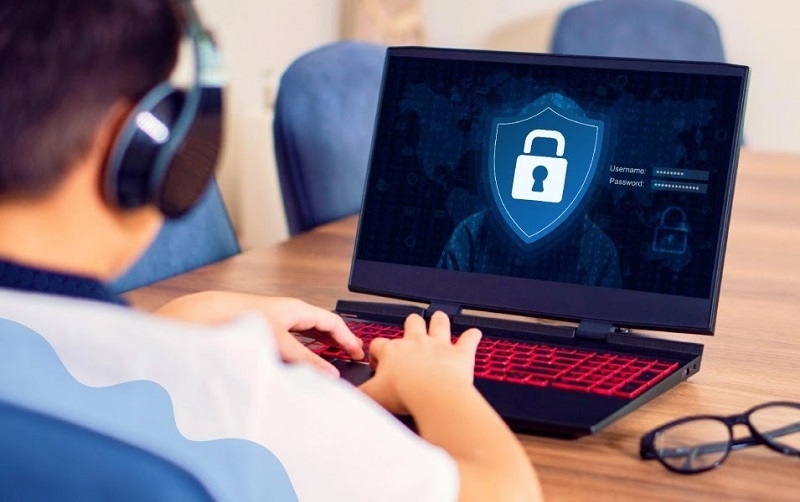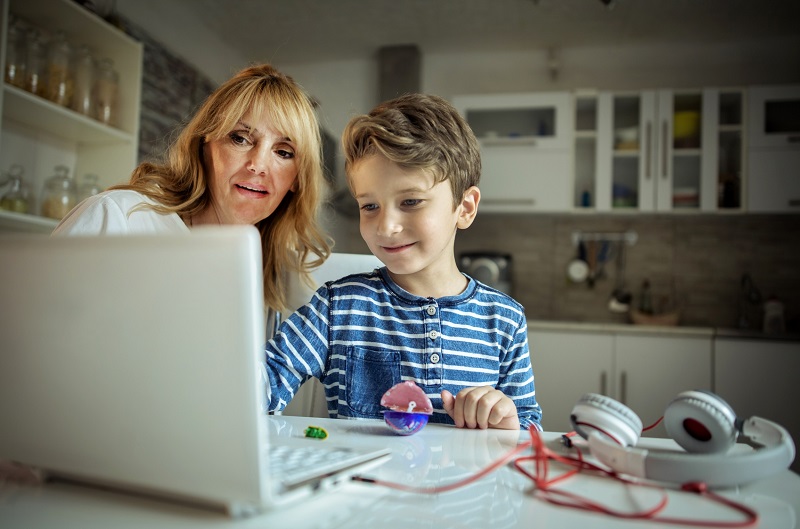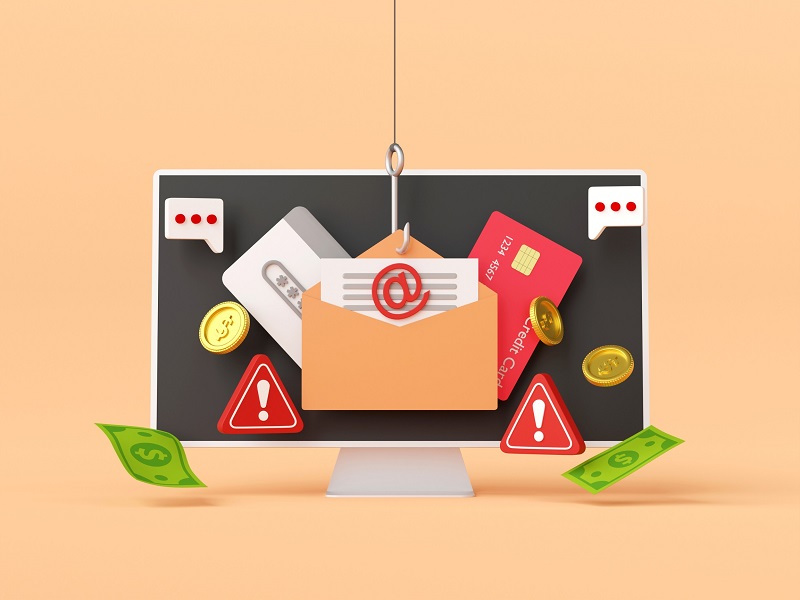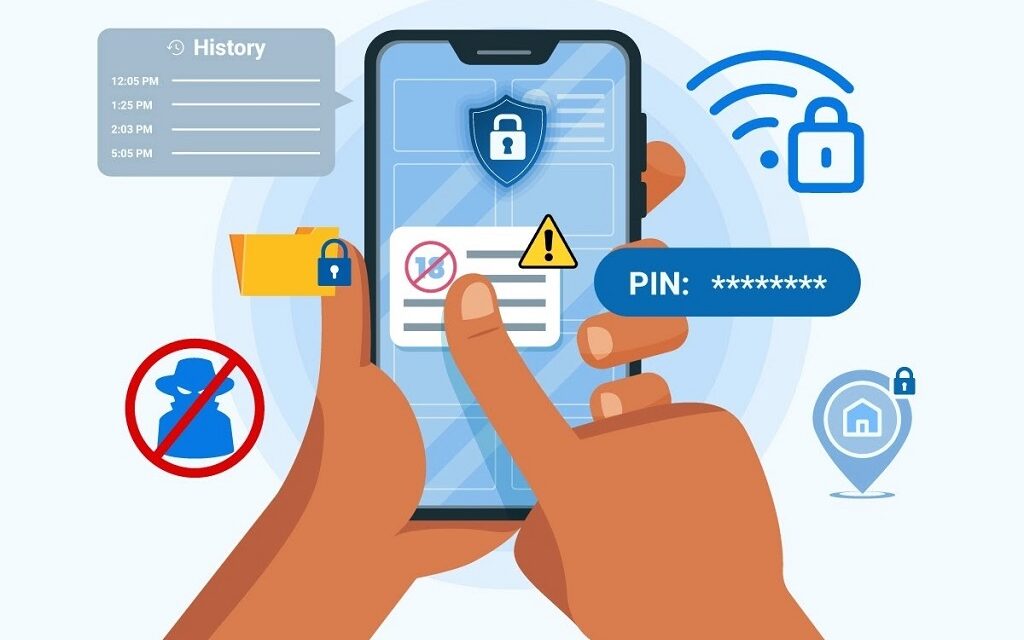In today’s digital age, children are being exposed to the dangers of the Internet more and more each day. Despite its endless possibilities for knowledge, entertainment, and convenient communication, it poses numerous daunting hazards for children.
Children can be at risk from a wide range of online threats from cyberbullying to sharing private information to digital scams to online predators. So how can we keep our kids safe online at home?
It’s crucial that parents and adults take a proactive approach to their family’s online safety. As a parent, you need to take advantage of tools and resources to educate your children about cybersecurity, set Internet usage limits, use parental control software, install antivirus programs, and more to ensure your child’s safety while using the Internet and its vast network of sites, communities and apps.
This article provides tips for keeping children safe online so they can explore the online world safely and responsibly at home.
Table of Contents
- 10 Tips to Improve Internet Safety for Children
- What Do Children Need to Know About Internet Safety?
- Essential Takeaway Advice for Parents
- Conclusion
- Parental Resources for Child Internet Safety
Also see:
10 Tips to Improve the Internet Safety for Children

Here are actionable tips that help improve children’s internet safety:
- Educate Children About Online Dangers and Cybersecurity
- Pay Attention and Supervise Children
- Use Parental Control Software
- Establish Internet Usage Restrictions and Time Limits
- Update the Software for a Child’s Computer
- Install an Antivirus and Anti-Malware Program on all Children’s Devices
- Protect Your Home’s Wireless Network
- Educate Children to be Careful of Their Digital Footprints
- Encourage Children to Keep Location Privacy
- Set a Good Example
1. Educate Children About Online Dangers and Cybersecurity
To improve internet safety for children, starting a conversation about potential risks that could arise online, such as cyberbullying, phishing, and identity theft, is vital.
To help a child better understand inherent risks, speak to them in simple terms that are appropriate and easy to comprehend for their age.
It is also crucial to educate kids about cybersecurity. Parents and adults should talk to children about potentially dangerous websites they can access, safe internet use, different types of cyberbullying, and other important subjects that will give them a more comprehensive understanding of how interconnected computers work and the possibilities for mishaps to happen.
It will be easier for children to grasp what they see or hear online if you talk to them openly about underlying risks of common online activities.
Also see:
2. Pay Attention and Supervise Children
When a child communicates to you about their online experiences, be patient and pay attention to what they have to say. This way, you’ll be able to understand better the problems they are facing online and identify any potential risks and appropriate counter-actions.

Monitor your child’s online behavior, especially while they’re young, to ensure that they act appropriately and safely, while offering advice as necessary.
Ensure that kids feel comfortable about talking to you about any worries or inquiries they have concerning the Internet. When necessary, be accessible to discuss and offer assistance. Try to instill in them an “ask for assistance” approach whenever they encounter an online situation that is unusual or concerning.
To understand the potential risks that children may encounter, stay up to date on the newest trends and online behavior issues.
3. Use Parental Control Software
It is essential for parents to be able to monitor their children’s online behavior, given the prevalence of online predators, improper content, cyberbullying, and other malicious threats.
The risks associated with using mobile devices and the Internet are likely not well-understood by most young children, therefore parents need to provide them early common-sense guidelines.
This is when parental control software will come in handy to help you monitor your child’s online activities, and increase your children’s online safety. Parental control software is critical to ensure that your children aren’t engaged in harmful online or digital activities.
Features of parental control software includes:
- Monitoring internet usage
- Managing how long they are connected to the Internet
- Keeping track of visited websites
- Blocking dangerous and inappropriate websites
- Reporting any suspicious online activity
4. Establish Internet Usage Restrictions and Time Limits
Youth who become addicted to the Internet may experience negative effects on their overall wellbeing, including: physical and mental health; sleep patterns; energy level; and academic performance. Therefore, setting time and usage limits for internet usage is essential for maintaining guardrails against unhealthy behavioral patterns.

Set usage restrictions and time limits for your child’s internet use if you observe them habitually staying up late browsing the web, especially on school nights.
Make sure to be very specific when letting them know how much time they can spend online on a laptop, computer, or mobile device.
5. Update the Software for a Child’s Computer
Ensure your child’s computer operating system has the latest and available security patches installed, including browsers, plugins, and desktop apps. Feature and security patches are included in these updates, and they are designed to make your software more secure and functional. Keep in mind that software updates are often created solely as a response to discovered security flaws.
6. Install an Antivirus and Anti-Malware Program on All Children’s Devices
Children naturally have curious natures and often enjoy trying new things. So it’s very likely that they will eventually click on a malicious link and download a harmful app or file from the Internet.
Thus, a trustworthy antivirus program with a real-time scanning engine, firewall, and automatic update on your child’s devices will help prevent them from phishing scams and other online threats.
If your child complains about slow connection speeds, rampant pop-ups, new toolbars, a different default search engine, or unexpected error messages, these could all be symptoms of malware infestation. Use an anti-malware program as much as possible to keep your child’s computers and devices safe and secure.
7. Protect Your Home’s Wireless Network
Keeping your home’s Wi-Fi connection private and only providing access to trusted individuals helps to prevent cyberattacks. Never share your credentials with anyone, whether it is a neighbor or a close friend.
It is important that only trusted people use your home wireless network. However, oftentimes people with malicious intent can gain unauthorized access to one’s home Wi-Fi. Thus, protecting your home wireless network from such unauthorized persons is extremely important.
To counter that threat, you can hide your Wi-Fi from being visible by anyone. You may also create a strong and unique password, with the best encryption in place.
8. Educate Children to be Careful of Their Digital Footprints
Every image, video, or private text information shared online leaves a digital trace, and once this information is made public, it might be utilized in ways you didn’t intend that can’t be controlled afterward.
Furthermore, anything that is posted online should be perceived as being permanent because it likely will be saved or shared by another user, even if the owner deleted it soon after the original was uploaded.
Children and young people must therefore be wise in safeguarding their sensitive information, photographs and videos. Additionally, parents who frequently upload photos and videos of their children online should also be cautious.
Encourage your child to limit their sharing only to persons whom they know well and trust to maintain control and respect over their digital footprint.
Rather than sharing publicly by default, most social media apps have privacy settings that will restrict sharing to friends only.
Also see:
9. Encourage Children to Keep Location Privacy
To improve internet safety for your children, you should always teach them to keep their location private. It is best to encourage them always to keep their location info turned off while using the Internet unless required.

Most networks, apps, and devices have geotagging capabilities that reveal your location and can be used to locate you. For obvious privacy and safety considerations, these functions should be disabled. Digital images, however, contain data like date, time, and GPS positions that might disclose your information.
Be cautious about how much information your child provides because not all social media platforms immediately delete or hide this information.
Also see:
10. Set a Good Example
Set a good example for your children by consistently demonstrating good online practices. This way, your children are more likely to emulate your habits and adopt positive online behaviors that protect them from online threats.

Limiting your own screen time while encouraging your children to do so is also crucial. Instead of instilling fear in them, educate them about good online practices and skills so that they can make the most of their online experiences.
What Do Children Need to Know About Internet Safety?
It’s essential that your children are knowledgeable about internet safety to detect any potential risk quickly.
In tandem with learning about internet security, children also need to develop new skills that are used with discipline, such as:
- Develop a “Spidey Sense” for Online Dangers
- Keep Information Private
- Use Secure Passwords
- Be Careful When Using Social Media
- Beware of Online Scams
Develop a “Spidey Sense” to Detect Online Dangers
To have a safe internet experience, children need to be educated about different online dangers and where and how they might occur. For instance, they might be a victim of cyberbullying or scams on the Internet. Social networking sites, chat rooms, and computer games can all pose various types of risks.

It is imperative for children (and adults) to understand that people who use the Internet for malicious intent are often very skilled at their craft. However, with deepening experience and knowledge overtime, children can develop an intuition about online threats (AKA “Spidey Sense”), as most scams are subtle and not obvious at the outset.
An effective means for all members of your family to stay abreast of cyber risks is to share lessons learned regularly. These examples can be first-hand experiences, classroom discussions, news stories, as well as parents sharing how cybersecurity is treated at their places of work. Cybersecurity can provide many valuable lessons about deception, rational and irrational decision-making, and personal safety.
Here are just two examples that will help your children begin to conceptualize online threats in more sophisticated manner:
- Understanding the Turing Test in Today’s World
- Recognizing When an Account of a Trusted Person Has Been Hacked
1. Understanding the Turing Test in Today’s World
Conceived by the brilliant British Mathematician and Computer Scientist Alan Turing, the Turning Test is a conceptual test of whether a human being can accurately and consistently detect if they are interacting with another human being, or an artificial entity, such as a computer program or bot.
In today’s world of rampant fraudsters, the test can be further evolved to determine if you can tell if a person you are communicating with (e.g. email, text, chat, DMs, voice, social media, etc.) is who they really say they are. Again “professional fraudsters” have many sophisticated tools at their disposal to trick even the most experienced online users.
Advances in Artificial Intelligence (AI) (e.g. artificial images, video, audio, voices, chat, bots, text, etc.) are making it increasingly difficult to decipher what is “real” and what is “fake”.
A helpful concept for children to learn is to take a “trust but verify” approach when encountering new persons online or unsolicited communication inquiries.
2. Recognizing When an Account of a Trusted Person Has Been Hacked
An effective way for fraudsters to acquire valuable and sensitive information or to commit scams is to hack social media accounts. Once a social media account is under the control of an unauthorized person, there is a window of opportunity to deceive the connected friends of the person whose account was compromised.
Children should be encouraged to call or visit a family member or friend whenever they suspect that something “does not feel right” about a given message, post, request, or interaction.
Keeping Information Private
Instruct your kids never to post their whole names, addresses, phone numbers, or any other personal details online. The use of initials instead of first names in public databases can also reduce the chances of your childrend being targeted for fraud, as scammers cannot claim to know your child’s first name, nor their gender.
Use Secure Passwords
Children should instinctly know not to share passwords with anybody and learn how to create and manage adequately secure passwords for all their internet accounts. A “first rule” of password security is to never write down passwords that can be easily discovered by others or that are unprotected. The goal of creating effective passwords should be coming up with passwords that are hard to guess but easy to remember.
Highly recommended by cybersecurity professionals, unique passphrases serve this purpose of being easy to remember but difficult to decipher as they are longer, more complex, and more random. Using a passphrase resource from UCSB, an example passphrase concept could be:
Bio at UCSB is great
This concept could then be transformed into a more secure passphrase by substituting a few letters with numbers (i = 1; o=0; e=3) and adding a few special characters (at=@; S=$; and ending the passphrase with an exclamation mark !)
B10 @ UC$B 1$ gr3at!
NYC Public Schools also has a very helpful overview of various approaches to creating and managing passwords in their Tools for Keeping Children Safe Online resource page.
Also see:
Be Careful When Using Social Media
Instruct your children not to reveal their location or other private information to strangers, and only accept friend requests from individuals they know in real life, and to be careful what they post online. Again, encourage your child, when in doubt, to confirm with a given friend (in person or by phone) when receiving a friend request, or when asked anything that may be perceived as sensitive or unusual.
Beware of Online Scams
Educate your kids not to click or download files and links from untrusted sources and be wary of sketchy offers. Again having all members of the family regularly share lessons learned is a great way to stay abreast of online threats. Remind your children to “learn from the mistakes of others“, as it is less painful, less embarrassing, and less costly!

Essential Takeaway Advice for Parents
Here is some essential takeaway advice for parents to help kids have a safe and smooth online experience:
- Sign up for all the social media platforms your kids use and learn different features, especially the privacy settings and report options.
- Learn how to use social media safely to provide your kids with the best guidance possible.
- Keep up with the most recent social media trends to determine whether they suit your children.
- Set an example for your kids and always act in a manner that is positive online. This way, they will learn from you and adopt safe internet practices.
- Learn to prioritize what is most important for you know about your child’s safety, so that you do not feel overwhelmed, or waste valuable time focusing on less important issues.
Conclusion
In summary, keeping your kids safe online at home requires continuous effort. By educating your children about online dangers and cybersecurity, establishing clear limits, fostering open and safe communication, and supervising them, you can ensure the safety of your kids as they navigate the digital world.
Remember that the Internet may be a fantastic resource with countless learning opportunities, but it is our collective responsibility as parents and adult guardians to guide our youth in making the most of it while staying safe.
Parental Resources for Child Internet Safety
- Keeping Children Safe Online (US DOJ)
- Tools for Keeping Children Safe Online (NYC Public Schools)
- Online Safety Issues (InternetMatters.org)
- Parental Controls (InternetMatters.org)
- Online Safety Flyers & Resources (InternetMatters.org)
- Resources for Parents, Educators & Communities (NetSmartz)
Recommended Home Security & Safety Articles
- Never Heard of Check Washing & Still Mailing Checks? Read This.
- Researching a Neighborhood Before Buying a Home
- Security and Safety Products for Your Home Renovation Project
- The Traits & Risks of Dangerous Trees: Is Your Property Safe?
- Building Technologies for Disaster Resistant Homes
- Why You Should Never Lend Your Ladder to Your Contractor
- Best Online Legal Services for Homeowners & Property Owners
- How to Live in a World of Fake Reviews
- Homeowner Liability With DIY Projects
| Purgula is reader-supported. When you click on links to other sites from our website, we may earn affiliate commissions, at no cost to you. If you find our content to be helpful, this is an easy way for you to support our mission. Thanks! Learn more. |







